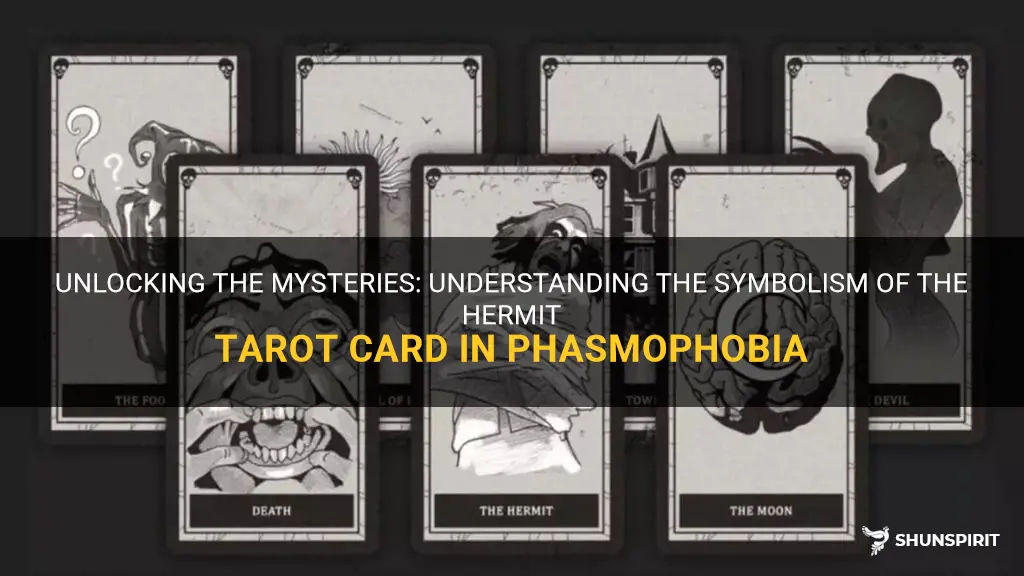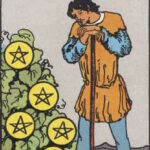In the sprawling world of tarot, the Hermit card emerges as a profound symbol of introspection, solitude, and enlightenment. Within the context of Phasmophobia, a popular video game that intertwines the paranormal with cooperative gameplay, the Hermit card takes on a unique significance, especially when viewed through a Christian lens. What does it mean to embody the virtues of the Hermit while navigating spectral encounters? To ponder this question is to embark on a profound exploration of self, faith, and the metaphysical dimensions of fear and discovery.
The Hermit card typically depicts an aged figure, often cloaked, holding a lantern that illuminates the path ahead. This imagery conjures notions of wisdom gained through experience and the pursuit of truth amidst darkness. In Christian tradition, light is frequently associated with divine guidance, a motif that resonates with the essential nature of the Hermit. The lantern serves as a metaphor for one’s faith, a guiding force during tumultuous times. In Phasmophobia, players engage in situations fraught with unseen dangers; the Hermit thus becomes a reminder that spiritual grounding is crucial when confronting fears that lurk in the shadows.
In the game, players often operate as a team, seeking to uncover the mysteries surrounding a haunted location. However, the presence of the Hermit nudges one to reflect: how does solitude serve in such scenarios? In a spiritual context, solitude is not merely a state of isolation, but a deliberate choice to withdraw from the clamor of worldly distractions. It encourages introspection and personal growth—principles that echo throughout Christian teachings. The Hermit’s call to inner search prompts players to consider the importance of individual conviction and belief when facing the unknown.
Moreover, the Hermit card underscores the value of discernment and wisdom. In a Christian perspective, this can be likened to the biblical injunction to seek counsel from God. In moments of disquietude, players may find themselves haunted by fears that stem not only from the game’s eerie surprises but also from their personal anxieties. Here, the Hermit’s lantern symbolizes the necessity of prayerful contemplation as a means of navigating these fears. It urges players to connect with their faith, seeking wisdom in the face of overwhelming uncertainty.
Furthermore, the Hermit’s journey can evoke a playful dilemma: how can one balance the pursuit of individual understanding with the camaraderie that survives in shared experiences? In every game session, players find themselves grappling with the tension between navigating their own paths while cooperating with others. The vibrant interplay of solitary reflection juxtaposed against team dynamics exemplifies the Christian ethos of community; believers are called to uplift one another, even while pursuing personal enlightenment. Thus, the challenge becomes one of mutual support—encouraging teammates to harness their inner Hermit while together striving to decipher the specters they encounter.
Delving deeper into the archetype, one might ponder the implications of fear with respect to faith. In Christian teachings, fear is often seen as an adversary—a significant theme echoed throughout the Bible. Through the lens of the Hermit, players are beckoned to confront their fears with courage, much like Christ’s call to his followers to trust in His protection. In Phasmophobia, navigating the haunted landscapes requires fortitude; the Hermit archetype encourages players to lean into their faith, reminding them that they need not brave the unknown alone. Surrounding oneself with the light of belief facilitates resilience in daunting circumstances.
Moreover, the Hermit card portrays an opportunity for players to consider their moral compass. Each haunted experience may unveil ethical quandaries, leading one to question their choices and motivations—an aspect resonant with Christian ethics, which emphasize accountability and righteousness. The card invites players to reflect deeply on their actions during gameplay: are they motivated by curiosity, fear, or the preservation of their team? By embracing the Hermit’s contemplative nature, players can achieve a greater understanding of their in-game decisions, aligning them with principles of integrity and compassion.
As the Hermit’s lantern casts light upon players’ paths, it also illuminates the concept of revelation. In Christian belief, enlightenment often follows trials and tribulations. In Phasmophobia, as players confront and overcome supernatural entities, they may experience groundbreaking realizations about their own fears and limitations. Each ghostly encounter can serve as a catalyst for personal growth, echoing the transformative journeys depicted in many biblical narratives. The Hermit’s influence invites players to embrace these revelations, nurturing a spirit of resilience and contemplation even when faced with terrifying apparitions.
Ultimately, the Hermit card in Phasmophobia encapsulates the delicate dance between personal introspection and communal bonding, between fear and faith. As players strive to connect with the metaphysical realm and grapple with their inner demons, they are also reminded of the integral role that spirituality plays in grappling with fears—both real and imagined. The symbolism of the Hermit serves as a poignant reminder: amid the darkness of the unknown, seeking the divine light can lead to profound understanding and grace. In embracing the Hermit’s journey, players are not only navigating the eerie landscapes of Phasmophobia but also embarking on an inner quest to illuminate their own souls.
So, how will you navigate your path through the shadows? Will you take a moment to reflect, seek the light, and let the Hermit’s wisdom guide your experience?









Leave a Comment